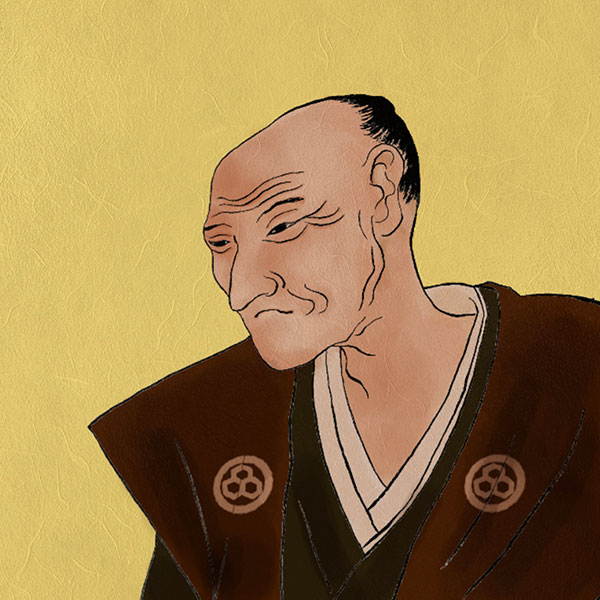- Suwa DomainRuled by a descendant of a priest
- The Suwa clan was a feudal domain that occupied the area around Suwa District, Shinano Province, with Suwa Takashima Castle as its residence. Takayoshi Hineno built Suwa Takashima Castle, and the Suwa clan, descendants of the Suwa Shrine Daishu, ruled it until the Meiji era. Let's unravel the history of the Suwa clan.

Takashima CastleSuwa City, Nagano Prefecture
| Other name | Suwa Floating Castle, Shimazaki Castle, Suwa Takashima Castle |
|---|---|
| castle construction | 1592 |
| address | 1-20-1 Takashima, Suwa City, Nagano Prefecture |
| telephone number | 0266-53-1173 |
| Opening hours | 9:00 a.m. to 5:30 p.m. (until 4:30 p.m. from 10/1 to 3/31) |
| closing day | 12/26-12/31 and the second Thursday of November |
| Admission fee | Adults 310 yen / Children 150 yen |
Mizuki is also known as ``Suwa's Floating Castle''. A watchtower-type castle tower with three floors and three floors. The roofs of the main buildings, including the castle tower, are thatched.
- Access to Takashima Castle
- 10 minutes walk from Kamisuwa Station on the JR Chuo Main Line.
HISTORYTakashima Castle, one of Japan's three major lake castles
Takashima Castle is a flat castle built in Takashima, Suwa City, Nagano Prefecture. When the castle was built, it was built on a floating island that jutted out into Lake Suwa, so it was also called ``Suwa's Floating Castle'' and is counted as one of Japan's three great lake castles. The castle, which was built using the most advanced technology at the time, was selected as one of Japan's top 100 castles (number 130). Let's unravel the history of Takashima Castle.
- Suwa before Takashima Castle was built
- In the Middle Ages, the Suwa clan, who controlled the entire Suwa District, built Takashima Castle (Chausu Castle) on Mt. Chausu, located north of the current Suwa Takashima Castle. Although the name is the same, this castle is a mountain castle. After the fall of the Suwa clan, the land of Suwa came under the control of the Takeda clan, and Takashima Castle became the base of control of Suwa county.
When the Takeda clan fell in 1582, Suwa County was ruled by Oda Nobunaga for a while, but when Oda Nobunaga was killed in the Honnoji Incident in the same year, the Suwa clan was destroyed by the Takeda clan. Yoritada Suwa, a member of the clan, built Kaneko Castle in Nakasu, Suwa City, and made it his residence. However, in 590 (Tensho 18), Yoritada Suwa was transferred to Musashi Province, and Takayoshi Hineno, a subordinate of Hideyoshi Hashiba, entered Takashima Castle in Mt. Chausu in his place. - From the construction of Suwa Takashima Castle by Takayoshi Hineno to the end of the Edo period
- Takayoshi Hineno spent nearly seven years from 1592 to 1598 building Suwa Takashima Castle in Takashima Village on the shore of Lake Suwa. At this time, he granted them fishing rights and exemption from corvée, and relocated them to Owada. It is said that Takayoshi Hineno was able to build a castle on the soft ground of Lake Suwa, as he had experience in construction work under Nobunaga Oda and Hideyoshi Toyotomi.
Suwa Takashima Castle used the latest technology at the time, such as constructing wooden rafts and piling stones on top. Even so, it seems that it was difficult to carry out the construction work in a short period of seven years, and there are several documents that document that they suffered from harsh labor. The Suwa Takashima Castle that was completed in this way was built in a form called ``Renkaku-shiki,'' with Inu-no-Watari-kaku, Sanno-maru, Ninomaru, and Honmaru lined up in a straight line from the north, with eight turrets, six gates, and three-layered It was equipped with a castle tower, etc. Although Suwa Takashima Castle lost all traces of a water castle due to the reclamation project of Lake Suwa carried out in the early Edo period, it still retains the nickname ``Floating Castle'' and is counted as one of Japan's three great lake castles. Ta.
Hineno Takayoshi, who built Suwa Takashima Castle, was transferred to the Mibu Domain in Shimotsuke Province in 1601, and the feudal lord Suwa Yorimizu became the castle owner. He is a descendant of the Suwa clan, which ruled Suwa County since the Middle Ages, and as a result, the Suwa clan came to rule this area until the Meiji Restoration. Suwa Takashima Castle is also famous for being the place where Tadateru Matsudaira, the sixth son of Tokugawa Ieyasu, was imprisoned, and because of this connection, it is often used as a place to imprison exiles. - Suwa Takashima Castle after the Meiji era
- At the beginning of the Meiji era, Suwa became part of Takashima Prefecture, and Takashima Castle was abandoned and used as the prefectural office.
In 1875, most of the buildings, including the castle tower, were destroyed or relocated, and Takashima Castle was reduced to a moat and stone walls, and the following year it was opened to the public as Takashima Park. After the war, Ninomaru and Sannomaru became residential areas, and in 1970, the main castle tower, turret, gate, and fence were restored and became a tourist attraction. In 2017, it was selected as one of Japan's top 100 castles, and remains to this day. - summary
- Currently, Suwa Takashima Castle has a special exhibition corner and information corner inside the castle, where you can learn about the history of the Suwa clan and the footsteps of the successive castle lords. Suwa Takashima Castle is also a famous cherry blossom viewing spot, and is crowded with locals and tourists every spring.
Read about incidents related to Takashima Castle
- Ninomaru RiotThe Suwa clan family riot that occurred in the late Edo period
- During the Edo period, which lasted for more than 260 years, family disturbances occurred many times in each domain. One such family disturbance occurred in the Shinano Suwa domain (also known as the Takashima domain, in the present-day Suwa region of Nagano prefecture) from 1770 to 1783.

History of the Suwa Domain, whose domain office is Takashima Castle
| Domain office | Takashima Castle |
|---|---|
| old area | Takashima, Suwa District, Shinano Province |
| stone height | 30,000 koku |
| Fudai/Tozama | Fudai |
| main lord | Mr. Hineno, Mr. Suwa |
In 1601, the Hineno clan was transferred to the Mibu Domain in Shimotsuke Province, and Fudai Daimyo Yoshimizu Suwa was given 27,000 koku. The Suwa clan became the feudal lord again and continued until the Meiji Restoration.


































